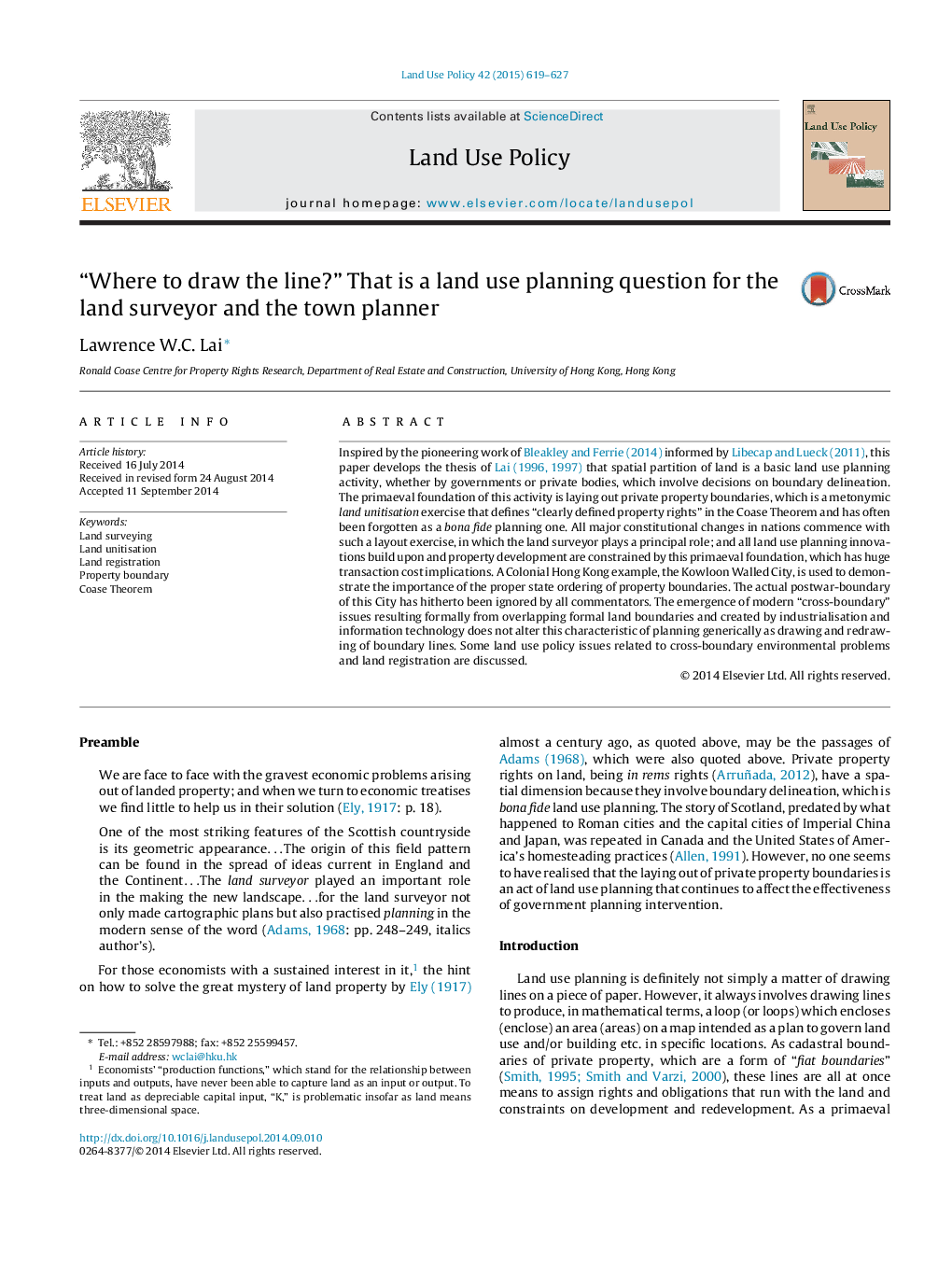| Article ID | Journal | Published Year | Pages | File Type |
|---|---|---|---|---|
| 6548483 | Land Use Policy | 2015 | 9 Pages |
Abstract
Inspired by the pioneering work of Bleakley and Ferrie (2014) informed by Libecap and Lueck (2011), this paper develops the thesis of Lai, 1996, Lai, 1997 that spatial partition of land is a basic land use planning activity, whether by governments or private bodies, which involve decisions on boundary delineation. The primaeval foundation of this activity is laying out private property boundaries, which is a metonymic land unitisation exercise that defines “clearly defined property rights” in the Coase Theorem and has often been forgotten as a bona fide planning one. All major constitutional changes in nations commence with such a layout exercise, in which the land surveyor plays a principal role; and all land use planning innovations build upon and property development are constrained by this primaeval foundation, which has huge transaction cost implications. A Colonial Hong Kong example, the Kowloon Walled City, is used to demonstrate the importance of the proper state ordering of property boundaries. The actual postwar-boundary of this City has hitherto been ignored by all commentators. The emergence of modern “cross-boundary” issues resulting formally from overlapping formal land boundaries and created by industrialisation and information technology does not alter this characteristic of planning generically as drawing and redrawing of boundary lines. Some land use policy issues related to cross-boundary environmental problems and land registration are discussed.
Related Topics
Life Sciences
Agricultural and Biological Sciences
Forestry
Authors
Lawrence W.C. Lai,
